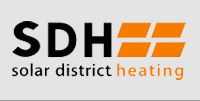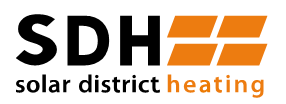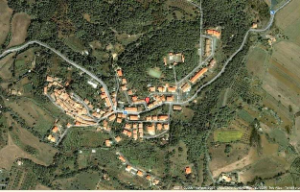Europe: SDHplus Gathers Experts and Newcomers to Solar District Heating
April 5, 2012
 Just after the Intelligent Energy Europe (IEE) project SDHtake-off will have ended in June 2012, there will be a follow-up project called SDHplus. Six new countries will join it: Spain, France, Lithuania, Croatia, Poland and Slovenia. Experienced partners from the former SDHtake-off project will help them promote solar district heating by launching awareness-raising campaigns and assessing the potential of their heat supply network. SDHplus comes with a budget of EUR 1.8 million from the IEE fund and will run over three years.
Just after the Intelligent Energy Europe (IEE) project SDHtake-off will have ended in June 2012, there will be a follow-up project called SDHplus. Six new countries will join it: Spain, France, Lithuania, Croatia, Poland and Slovenia. Experienced partners from the former SDHtake-off project will help them promote solar district heating by launching awareness-raising campaigns and assessing the potential of their heat supply network. SDHplus comes with a budget of EUR 1.8 million from the IEE fund and will run over three years.
Six new organisations – and with them, six new countries – will join the project. The new organisations are mostly research institutes and industry associations from the new countries. The SDHplus project will include a total of 18 organisations from 12 implementing countries.
The new members’ first task will be to address the national district heating stakeholders and raise their awareness of solar district heating. Events, such as conferences and seminars, are thought to attract at least 1,000 stakeholders. The new members and those (old) members which are at the very beginning of their business involvement in solar district heating will receive support through one-to-one coaching by experienced organisations: Solites from Germany will coach members from Spain and Italy, Planenergi and the Danish District Heating Association will support French and Lithuanian members, SOLID from Austria will help businesses, associations and institutes from Croatia and Slovenia, and CIT Energy Management from Sweden will coach Polish and Czech enterprises.
In the countries of Eastern Europe, district heating is a very common, yet not very popular technology. It is associated with old structures, monopolies and expensive heat supply. At the same time, many houses are old and do not have any regulation valves for their heating systems. To comply with the EU´s climate goals, these countries have to present major efforts in the coming years. For example, Lithuania has agreed to reach a renewable energy share of 23 % by 2020 in the frame of the EU climate package. During the same period, the country also plans to retrofit 70 % of the existing multi-family buildings. The retrofit will reduce the temperature in the district heating systems and make it easier to integrate solar. Altogether, the SDHtake-off parties estimate that the new member countries can build up a capacity of 500 MWth of solar district heating until 2020.
The main task of those countries which have already been in the focus of SDHtake-off will be to develop new business models and marketing strategies. Stakeholders have pledged to start, all in all, 18 pilot projects. Although SDHplus does not provide any funding for the plants, they will be closely monitored throughout the project in order to reach conclusions about how well the business models perform.
One of the other tasks will be to assess how solar heat can help district heating to comply with regulations on carbon emissions and renewable energy use. More and more European cities are introducing building energy standards that require emission levels below national energy-saving targets. The German city of Hamburg is just one example of that. It requires new buildings to meet levels 30 % below national regulations. “Our aim is to develop business opportunities based on these regulations,” SDHplus Project Coordinator Thomas Pauschinger says.
A working group will simultaneously evaluate marketing approaches to integrate solar heat fed into the grid by district heating customers. Existing examples can be found in Lerum, Sweden (see http://www.solarthermalworld.org/node/3063) and Hamburg, Germany (see http://www.solarthermalworld.org/node/3112). The working group will compare already developed marketing approaches and make suggestions for district heating companies that wish to use a feed-in model in order to increase customer loyalty. This also includes marketing models for green heat. As for electricity, many utilities in Germany offer their customers “green power”. More than 3 million Germans chose this option in 2011, although they often pay a few Euro cents more per kWh. Green heat may have similar marketing potential. Some municipal utilities already offer green heat from biomass. They do not offer different tariffs, but use the green heat for general marketing.
More information:
http://www.solar-district-heating.eu


